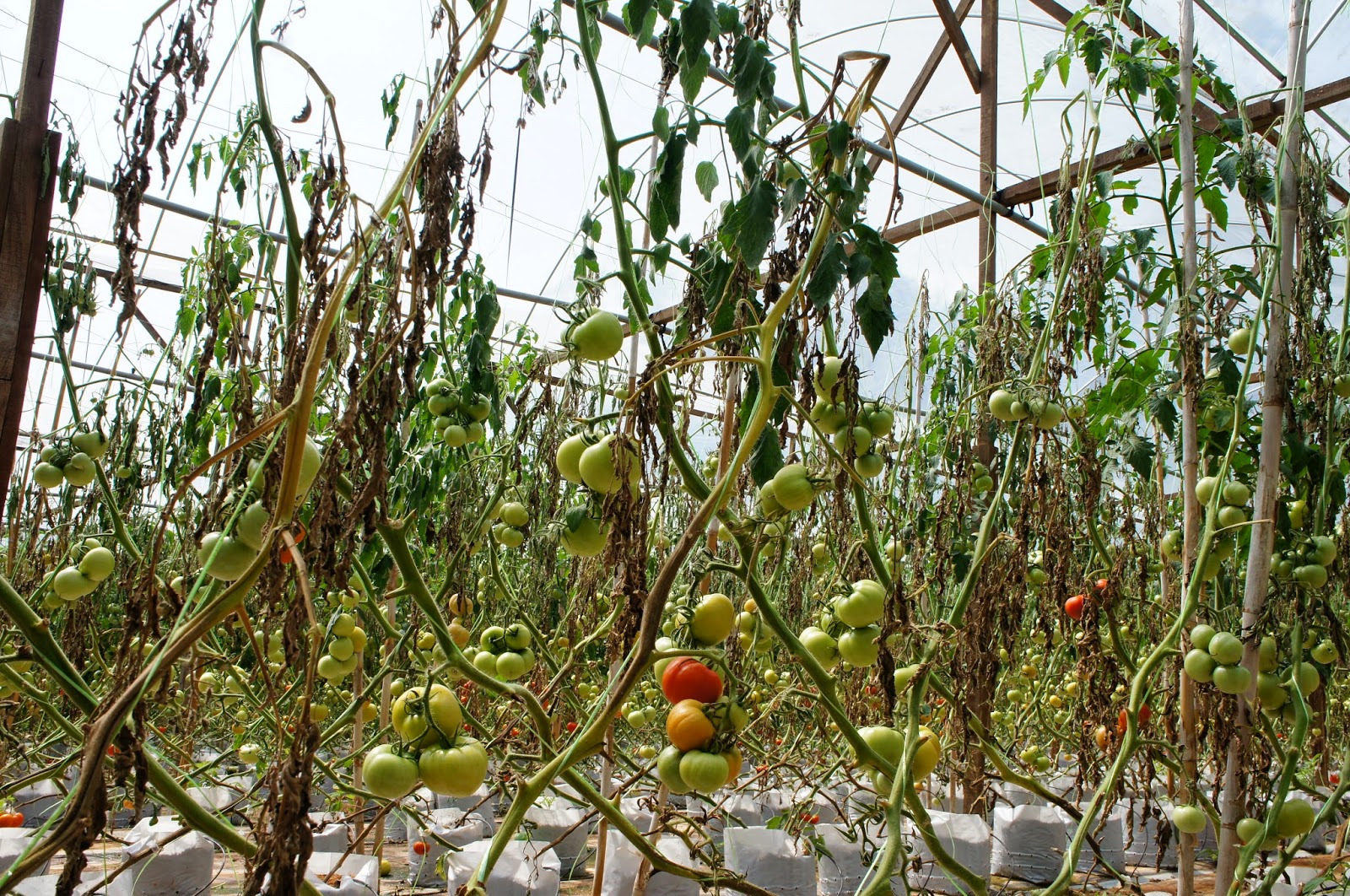Tomato bacterial wilt is a very destructive disease in green house planting in Cameron Highlands, caused by Ralstonia solanacearum, soil-borne pathogens. Harvesting could be ended after the first harvest, usually 2 months after transplanting. Disease getting severe after first harvest and start spreading from plant to plant, probably because harvesting tools used as the vector transmitting the inoculums. Healthy tomato plants in Cameron commonly can harvest up to 6 months.
Bacteria infection causing blockage of the vascular system, preventing water and nutrient transportation, symptoms started with wilting WITHOUT ANY LESIONS, followed with canker stretching over the basal stem, near the soil line. The canker symptom could be confusing with Botrytis cinerea, but its infection can be observed on leaves, fruit peduncle as well as stem. Fruits produced are small and inferior.
To differentiate the bacterial from fungal infection, cross cut the basal stem and dip into a glass of water, bacteria ooze will stream out from the stem.
 |
| Canker symptom appear on the basal stem. |
 |
| Plants died off and fruits awaiting last harvest. |
 |
| Great loss caused by the TBW. |


